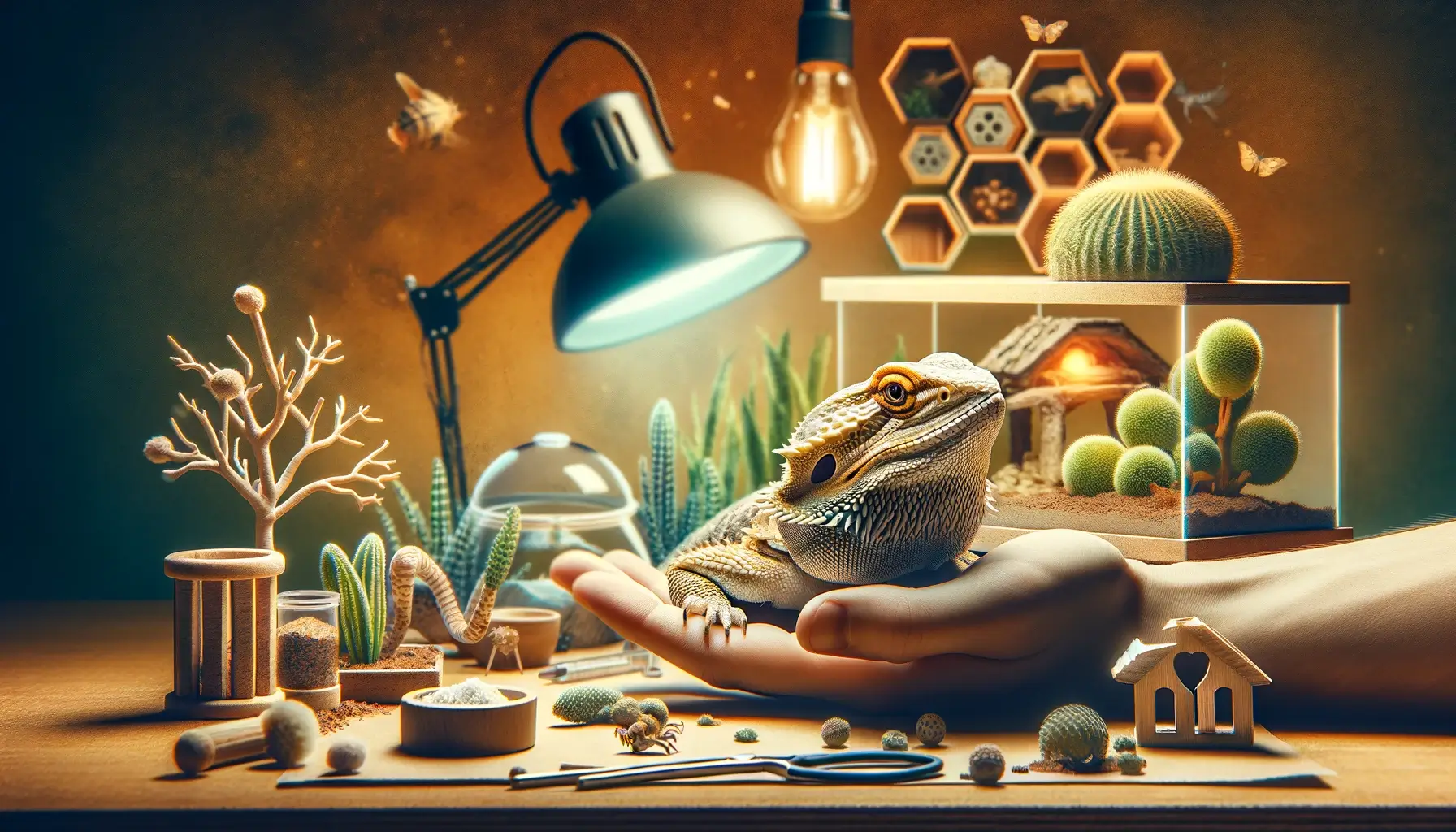Did you know the average bearded dragon can grow up to 24 inches long? That’s a reasonably giant pet lizard. But this size is only guaranteed for some dragons, as various factors can influence their growth. The type of bearded dragon, their diet, and their environment all play important roles. But what specific aspects should you focus on to guarantee your dragon achieves a healthy size? How might the care for a German giant bearded dragon differ from a fancy or red one? Let’s explore these questions deeper, giving you the knowledge to provide the best care for your unique pet.
Understanding Bearded Dragon Sizes
Grasping the range of sizes that bearded dragons can reach is essential to understanding their care needs and ensuring they have adequate space to thrive. Bearded dragon sizes vary and are greatly influenced by genetics, diet, and environment. In general, they can grow from 12 to 24 inches in length, with males often larger than females.
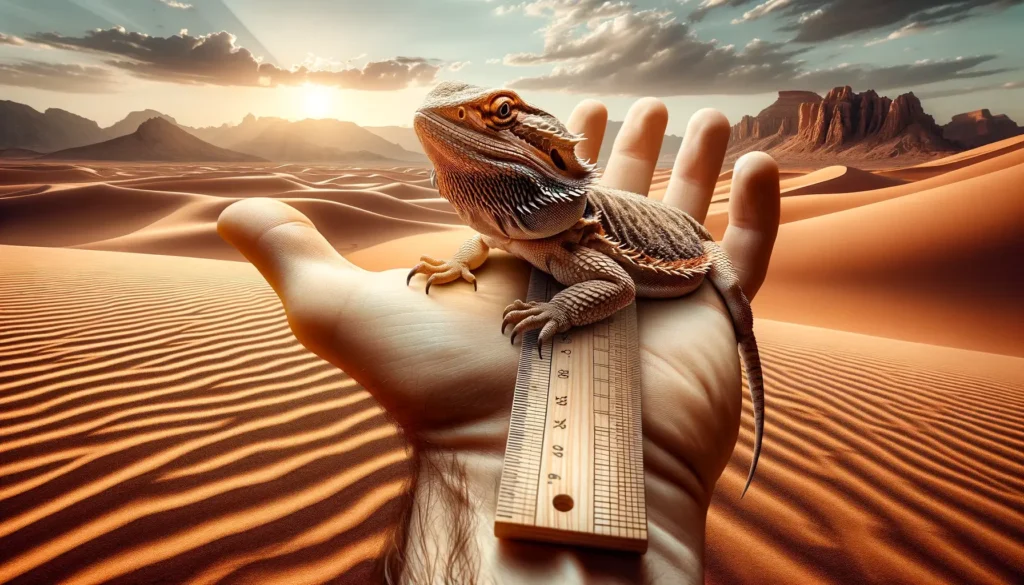
In captivity, bearded dragon growth is more predictable. You might notice your pet reaching full size within 12 to 18 months. Surprisingly, the bearded dragon size in captivity tends to be larger than in the wild due primarily to a controlled diet and lack of predators. A spacious habitat is vital to accommodate their growth and promote healthy movement.
Conversely, bearded dragons in the wild are usually smaller. Frequent movement, competition for food, and the risk of predation contribute to a generally smaller size. Despite these differences, understanding the potential sizes of both captive and wild bearded dragons is critical to offering appropriate care. Ultimately, comprehending the dynamics of bearded dragon length and growth aids in fostering their well-being and freedom.
Growth Patterns of Male Bearded Dragons
Diving into the specifics, you’ll find that male bearded dragons exhibit unique growth patterns, often surpassing their female counterparts in size. Concerning their size, male bearded dragons can reach lengths of 24 inches, with some even extending to 26 inches. This is a significant increase, especially compared to their birth size, which is usually around 4 inches.
Male bearded dragons’ growth can be rapid, especially in the first year of their life when they can grow up to 1 inch per month. This rapid development requires proper nutrition and care to support their increasing length and weight.
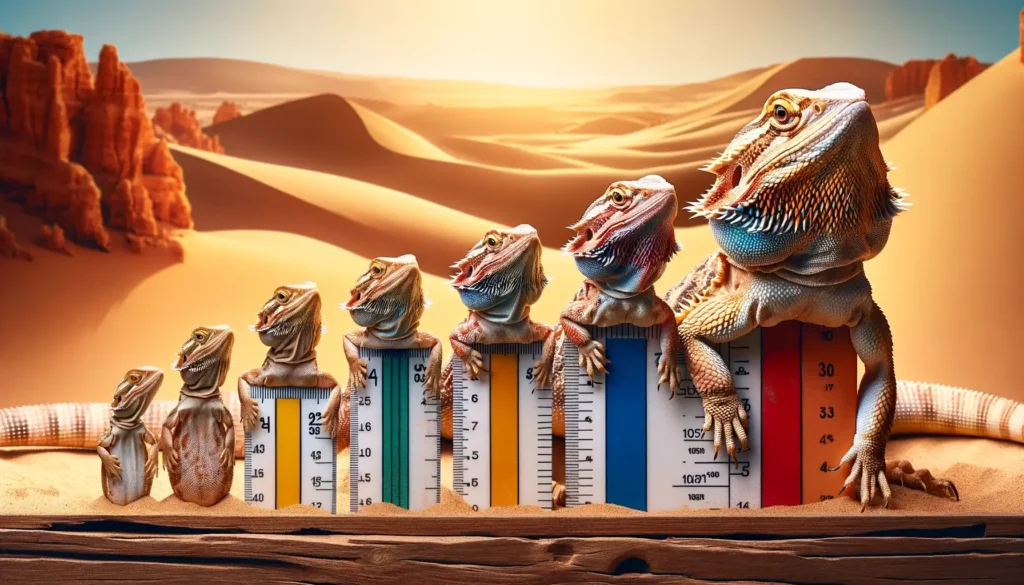
Regarding weight, a healthy adult male bearded dragon can weigh between 300 and 700 grams, depending on factors such as diet, habitat, and overall health.
Concerning development, male bearded dragons reach sexual maturity around 8 to 12 months. While these growth patterns are common, individual male bearded dragons can vary in size, weight, and development based on their genetic makeup and environmental factors.
With the freedom to grow, your male bearded dragon will flourish, reaching its full potential in size and weight.
Size Differences in Female Bearded Dragons
Female bearded dragons are generally smaller than males, typically ranging between 18 and 22 inches in length. This is the average length, but some factors can influence how big female bearded dragons get, such as the dragon’s diet, habitat, and overall health.
Female bearded dragons’ growth rate is consistent until they reach sexual maturity, usually when they are about a year old. From then on, their growth slows a lot. While they may continue to grow a bit, you will see a rapid increase that is different from what it was during their first year.
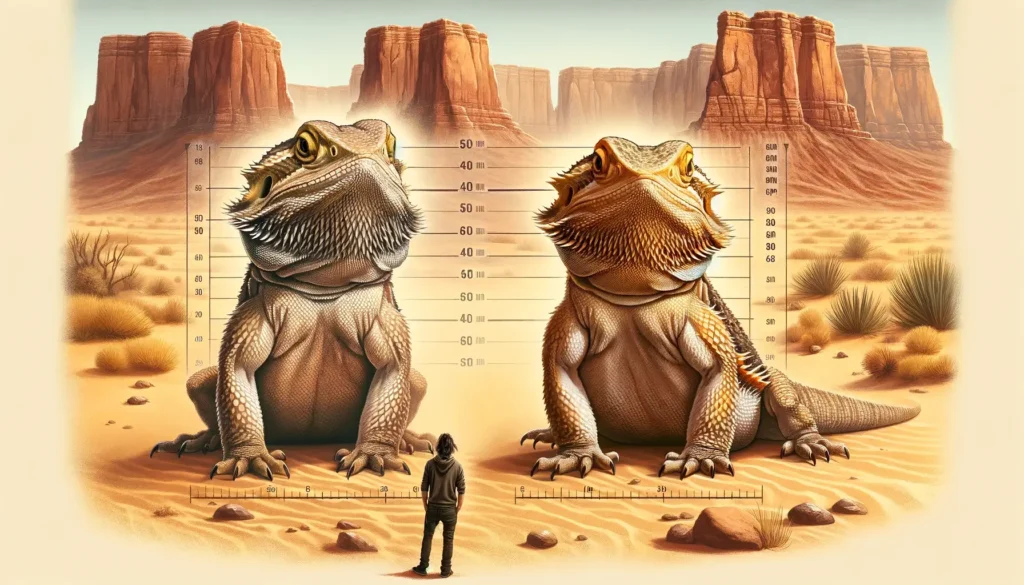
Female bearded dragons are often more slender than their male counterparts in terms of width. Their bodies are more streamlined, with less pronounced features. The size differences in female bearded dragons can be subtle, but they are important to note for proper care and handling.
Understanding female bearded dragons’ size and growth patterns will allow you to provide them with appropriate care and ensure they live healthy and comfortable lives. A well-cared-for bearded dragon can reach its full potential, so pay close attention to your dragon’s diet, living conditions, and overall health.
Variations in Bearded Dragon Species
As size varies between male and female bearded dragons, different species of these fascinating reptiles also exhibit distinct characteristics and size variations.
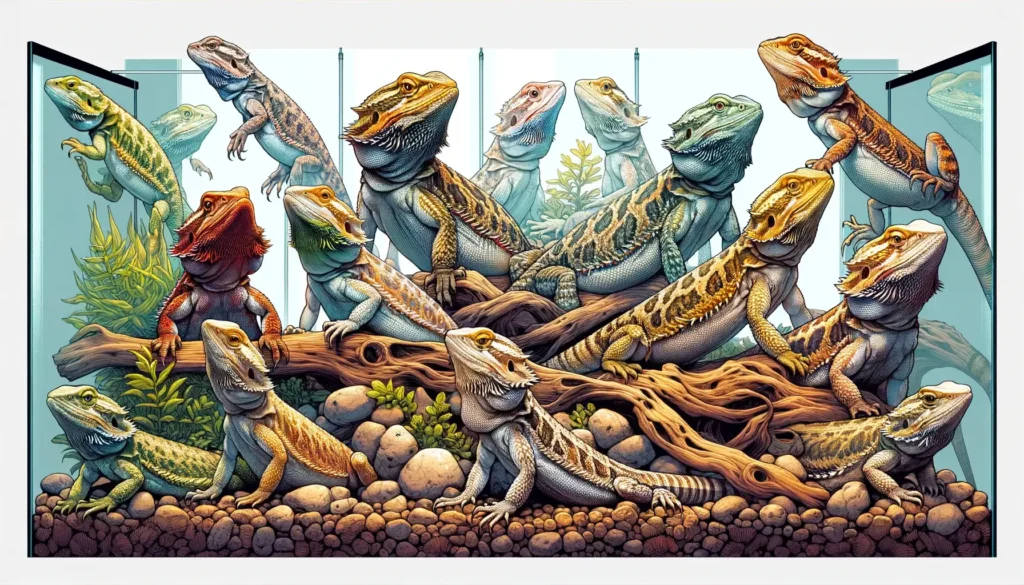
Let’s delve into the specifics of three major types:
Standard Bearded Dragons: These reptiles, commonly kept as pets, can grow up to 24 inches in captivity. So, when you question ‘How big do bearded dragons get in captivity,’ the answer typically ranges from 16 to 24 inches.
Red Bearded Dragons: A popular color morph, these dragons are not significantly different in size. Thus, ‘How big do red bearded dragons get’ is comparable to their standard counterparts, with adult sizes ranging from 18 to 24 inches.
Wild Bearded Dragons: When you wonder ‘how big bearded dragons get in the wild,’ you’d be surprised to learn that they are usually smaller due to harsher conditions, with adults often measuring between 12 and 20 inches.
Factors Affecting Bearded Dragon Growth
Have you ever wondered what factors influence the growth of your bearded dragon? Several variables contribute to determining how big bearded dragons get. Genetics play an integral role in their overall size. For instance, how big fancy bearded dragons get or how big male bearded dragons get largely depends on their inherited genetic traits.
Just like humans, the sex of the bearded dragon also influences its growth. Males tend to be larger than females; hence, the query, how big do male bearded dragons get, often yields more extensive measurements. The type of bearded dragon also matters. For example, how big red morph bearded dragons may differ from how big leatherback bearded dragons get?
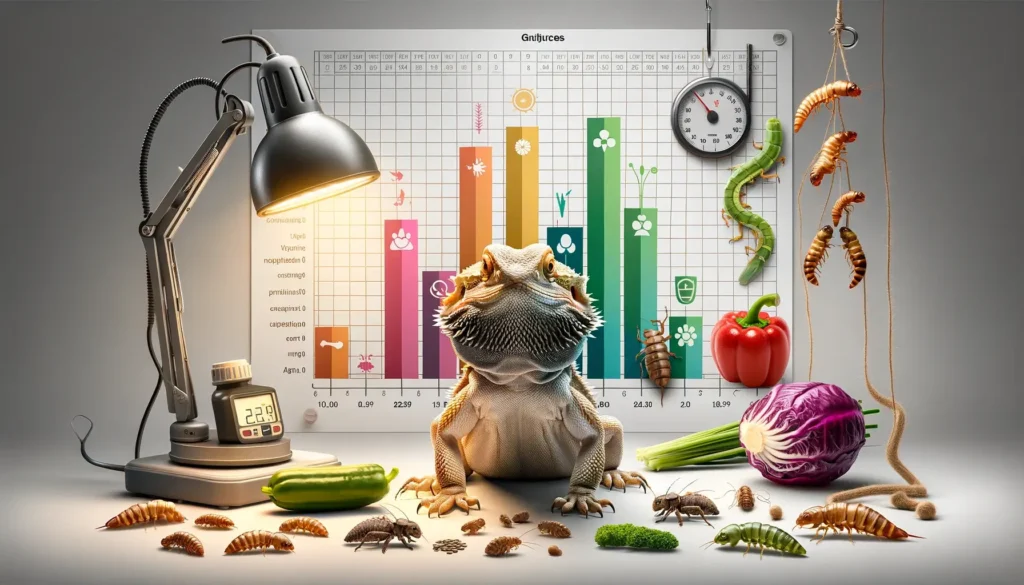
Environmental factors, including habitat and diet, are also essential. Although not directly controlling size, they can impact growth rates and overall health, affecting how big your bearded dragon can get. Remember, a healthy dragon is likelier to reach its full growth potential. So, as you seek freedom in caring for your unique pet, consider these factors to understand its growth trajectory.
Proper Care for Optimal Growth
Providing your bearded dragon with proper care and ideal living conditions is vital to guaranteeing its full growth potential. Ideal growth in bearded dragons depends on their environment and dietary needs, and you have a significant role in ensuring these are met.
Diet: Bearded dragons require a balanced diet of insects, vegetables, and fruits. It’s advisable to feed your pet various foods to ensure it receives all the necessary nutrients for growth.
Habitat: The size of the bearded dragon’s enclosure can directly impact its growth. Being cramped can stunt their development, so providing a spacious, well-ventilated terrarium is critical.
Temperature and Lighting: Bearded dragons need a heat source to digest their food and UVB light to produce Vitamin D3, vital for calcium absorption and bone growth.
Proper care for bearded dragons isn’t just about ensuring they grow to their full size; it’s about promoting a healthy, long life. By following these guidelines, you’ll be well on your way to fostering your bearded dragon’s growth and ensuring it reaches its maximum potential.

